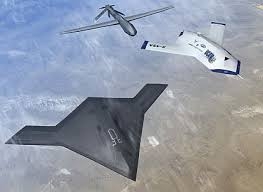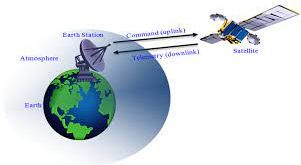Biotechnology is technology that uses biological systems, living organisms, or derivatives thereof, to make or modify products or processes for commercial application or benefit to humanity. This technology utilizes varied biomolecular and cellular procedures in order to develop products and technologies that ultimately assist in advancing human lives as well …
Read More »Superresolution imaging
For centuries, light microscopy has greatly facilitated our understanding of how cells function. In fact, entire fields of biology have emerged from images acquired under light microscopes. Indeed, one major element that makes light microscopy so powerful in biological research is the development of various staining methods that permit the …
Read More »Miniaturized Spectrometer
In the broadest sense a spectrometer is any instrument that is used to measure the variation of a physical characteristic over a given range; i.e. a spectrum. This could be a mass-to-charge ratio spectrum in the case of a mass spectrometer, the variation of nuclear resonant frequencies in an NMR …
Read More »Twisted Graphene for Quantum technology
Graphene is a 1-atom-thick layer of tightly bonded carbon atoms arranged in a hexagonal lattice. Graphene the world’s first 2D nanomaterial, is widely regarded as the “wonder material” of the 21st century due to the combination of its extraordinary properties. As a single layer of graphite, it is the thinnest …
Read More »Air-launch-to-orbit brings space launch to any airport and covert military satellite launches
There are three major launch types for spacecraft: vertical takeoff, horizontal takeoff, and air launch. The cost of launching into space is often measured by the change in velocity required to reach the destination orbit, known as delta-v or Δv. The amount of Δv required for a mission depends on …
Read More »Airforce develop Artificial Intelligence and Autonomous Systems to meet challenges of Cyber-Attacks, Anti-Access/Area-Denial (A2SD) actions and Space Threats
The current Armed drones like Predators and Reapers are essentially remote controlled that is they involve human operators remotely controlling the vehicle with the assistance of fairly low levels of automation for some functions (e.g., the operator specifies waypoints to be followed by the platform). Systems like these have proved …
Read More »From the ground to the skies: How SDRs are shaping the future of military communication
Software Defined Radio (SDR) refers to a radio communication system where most of the traditional radio hardware components, such as filters, amplifiers, and modulators/demodulators, are replaced with software running on a general-purpose computer. In an SDR system, the analog signals received by the antenna are digitized by an analog-to-digital converter …
Read More »Satellite Telemetry, tracking and command (TT&C) Subsystem is a crucial part of any space mission
Spacecraft are man-made machines that operate in space. An orbiting spacecraft is normally referred to as a satellite, although it is manmade as opposed to a natural satellite like our moon. A spacecraft is typically subdivided into two major parts, the payload and the bus. The bus provides the structural body …
Read More »Thermoplastic Welding for commercial and military aircrafts
The composites industry is constantly being shaped and reshaped by myriad forces – people, markets, technologies – all stimulating innovative new ways to apply fiber-reinforced materials in everything from boats and wind blades to airplanes and automobiles Thermoplastics are synthetic plastics that can be melted, shaped, and cooled to …
Read More »Military cables including RF and Microwave Transmission lines
Transmission Line principles Transmission lines are means of transporting RF energy between subsystems. A simple wire lead does not work well for RF and microwave applications due to its large dimensions relative to a wavelength and losses due to the skin effect. To take into account the unique characteristics of …
Read More » International Defense Security & Technology Your trusted Source for News, Research and Analysis
International Defense Security & Technology Your trusted Source for News, Research and Analysis

